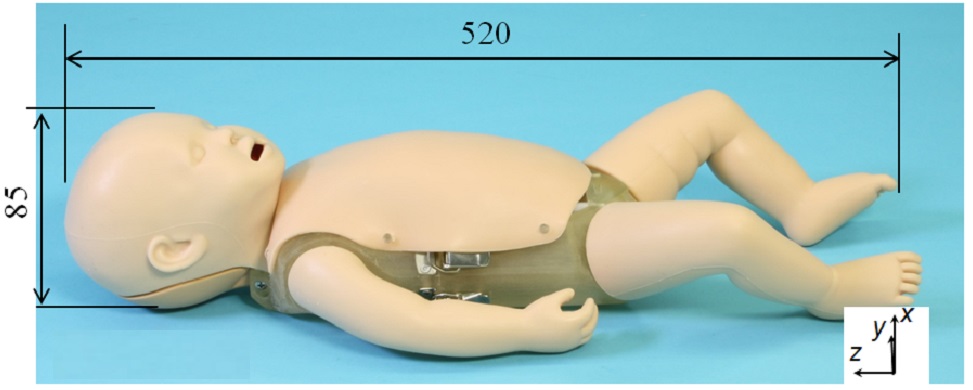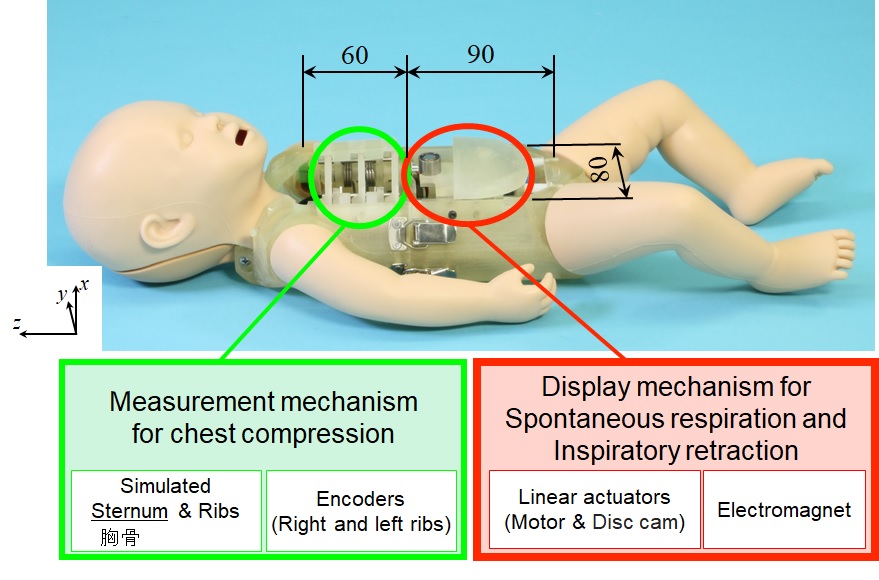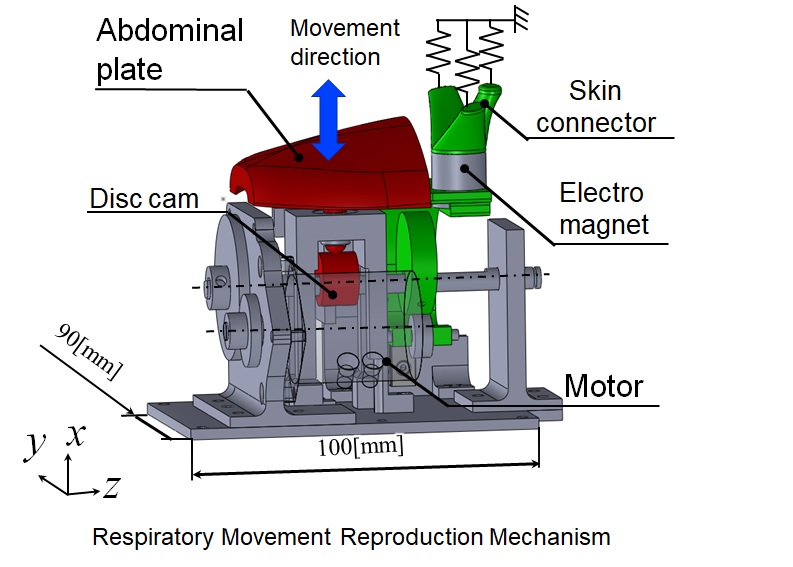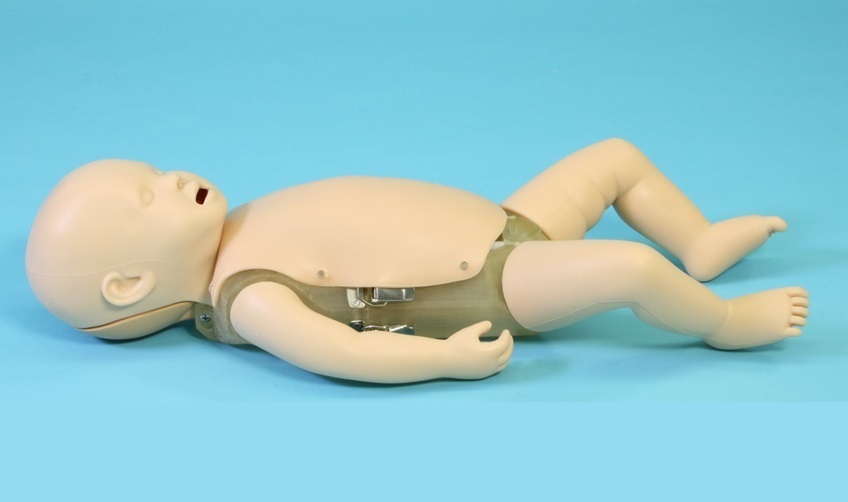Abstract
About 15% of newborns are born in a state of apparent death and require some form of resuscitation. In Japan, about one million newborns are born each year, so more than one hundred thousand newborns need to be resuscitated . The Japanese Society for Perinatal and Neonatal Medicine established the guideline in such cases; Neonatal Cardio-Pulmonary Resuscitation (NCPR). However, deliveries can happen in various places; hospitals, obstetrics clinics and midwives’ houses, and the specialists can’t be there every time. For this reason, it is important not only for specialists but also for all health-care workers to train NCPR.
The training courses using manikin simulators are being held to popularize NCPR. However, the training with manikin simulators has problems: the large burden on the instructors and the low reality of the training.
The purpose of this research is realizing the neonatal resuscitation training system that can simulate various scenarios according to the guideline and present advice based on the quantitative evaluation of treatments. In 2019, we developed the neonatal resuscitation simulator WAKABA-4 (WAseda Kyotokagaku Airway BAby-No.4.) This simulator can simulate the breathing motion of the inspiratory retraction and the spontaneous breathing, which is the indication of the treatment in the NCPR algorithm.

Fig.1 WAKABA-4
Internal Structure
As well as WAKABA-1~3 has the body which equivalent to the average size of the healthy newborns, and it has the face and the limbs using human-like flexible materials. In addition, the airway from the mouth to the lungs was made from the flexible material, and it has a tongue, an epiglottis, and a branch to esophagus. These flexible parts were produced by the joint research company, Kyoto Kagaku Co., Ltd.
WAKABA-4 is equipped with the mechanism for the breathing motion of the inspiratory retraction and the spontaneous breathing; it was designed so that the WAKABA-2’s mechanisms for simulating the measuring the chest compression can be mounted together.
The two respiratory motion reproduction mechanisms reproduce the vertical motion of the abdomen by converting the rotational motion of the direct drive motor into a linear motion using a disk cam.By using an electromagnet to switch between modes, I was able to reproduce multiple breathing motions with a single motor.
The pictures show the internal mechanism in the simulator, the schematic diagram of the mechanism, and the a view of the abdomen during the breathing motion.

Fig.2 Internal structure

Fig.3 Mechanism to inspiratory retraction breathing
In the future, we will develop more functions to simulate other vital signs, such as muscle tone and
heart rate, then integrate those functions with that of WAKABA-1.
This research was supported by the National Center for Child Health and Development.
Documents
Keigo Momoi,Yasutaka Takebe,Syunya Ogawa,Tamotu Katayama,Minoru Kagetyama,Atsuo Takanishi,Hiroyuki Ishii:"Development of a Neonatal Resuscitation Training System -Design and Manufacture of a Neonatal Simulator Capable of Reproducing the inspiratory retraction and the spontaneous breathing",The 38th Annual Conference of the RSJ,1H1-06,2020.



